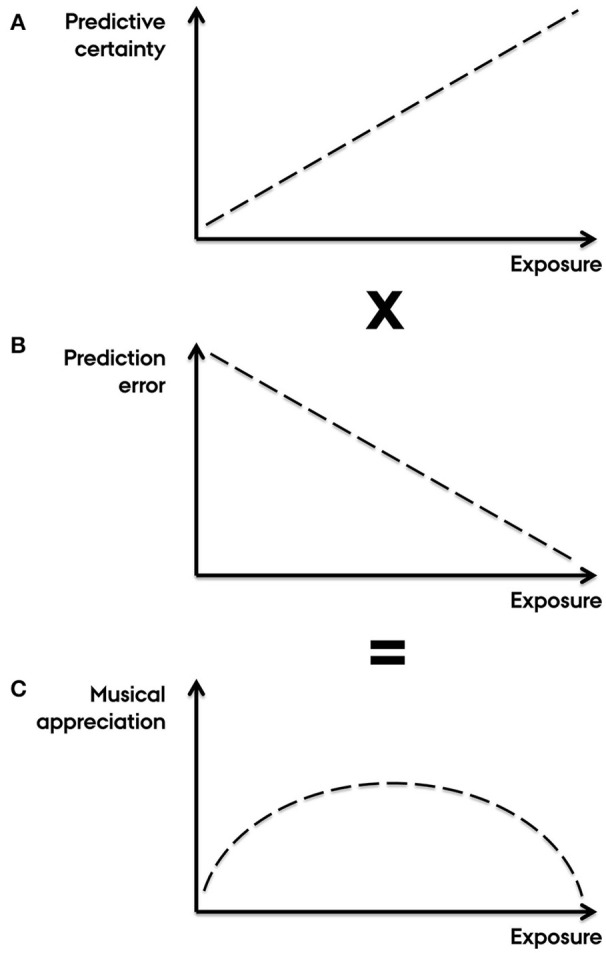Figure 1.

Predictive coding of musical appreciation with increasing exposure. Understanding the inverted U-curved relationship between exposure and appreciation is a key question in the cognitive neuroscience of music (Salimpoor et al., 2015). Here, it is unadvisable to conflate predictions about musical structure (PE) and its reward value (RPE) (cf. Salimpoor et al., 2015, Box 2). The alternative account presented here is based purely on PE, with no reference to RPE or conflation of the two. Instead, we emphasize contrastive interactions between schematic expectations, pertaining to generalized knowledge about a musical style, and veridical expectations, pertaining to specific knowledge about particular pieces (Huron, 2006). These two types of expectations have distinct neural representations (Miranda and Ullman, 2007). (A) Initially, because unfamiliar music affords a weak predictive model, the gain on error units is set such that prediction error is low in salience (Friston, 2009). With increasing exposure, music is contextualized (e.g., determining key, tempo, meter, instrumentation, duration, form, genre) leading to schematic expectations with higher certainty (Hansen and Pearce, 2014; Hansen et al., 2016). Simultaneously, veridical expectations arise causing potential conflicts with schematic expectations (Huron, 2006). This sharpens the listener's predictive model generating stronger expectations with higher error-unit gain, leading to gradually more salient prediction error (Hansen and Pearce, 2014; Hansen et al., 2016). (B). With increasing levels of exposure (and ultimately over-exposure), the amount of prediction error gradually declines as veridical expectations become increasingly aligned with sensory input and thus are assigned greater relative importance compared to schematic expectations. (C) The combination of increasing certainty-weighting of prediction error (due to gradually higher predictive certainty) and fewer instances of prediction error (due to minimization of free energy) results in an inverted U-shaped trajectory of musical appreciation with increasing levels of exposure. This is consistent with dopamine coding for the precision of prediction error.
